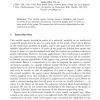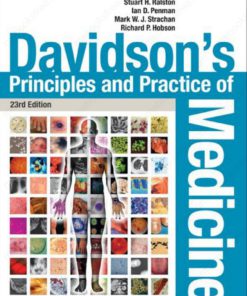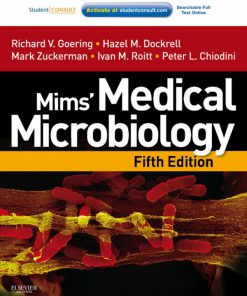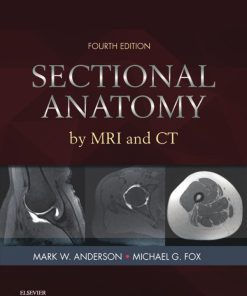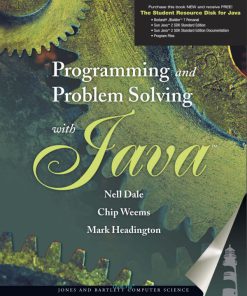MRI Basic Principles and Applications 5th edition by Brian Dale, Mark Brown, Richard Semelka 9781119013037 1119013038
$50.00 Original price was: $50.00.$25.00Current price is: $25.00.
Authors:Brian M. Dale , Author sort:Dale, Brian M. , Published:Published:Aug 2015
MRI Basic Principles and Applications 5th edition by Brian Dale, Mark Brown, Richard Semelka – Ebook PDF Instant Download/Delivery. 9781119013037, 1119013038
Full download MRI Basic Principles and Applications 5th edition after payment
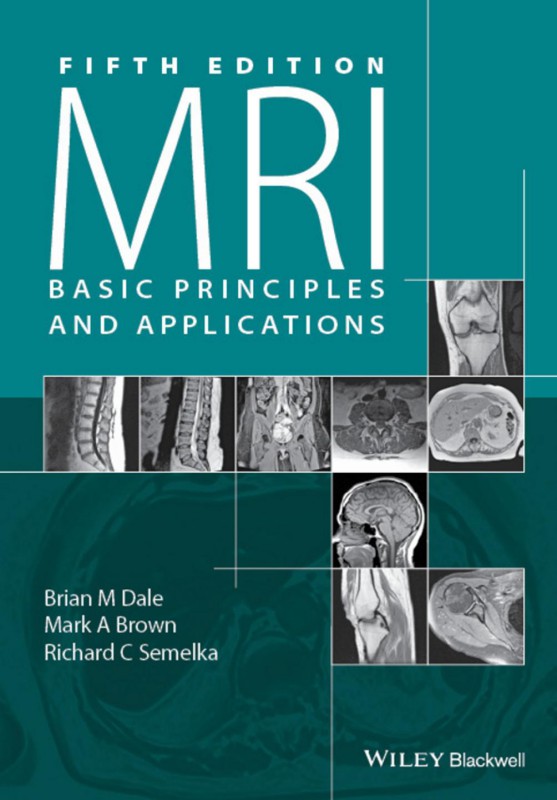
Product details:
ISBN 10: 1119013038
ISBN 13: 9781119013037
Author: Brian M. Dale; Mark A. Brown; Richard C. Semelka
This fifth edition of the most accessible introduction to MRI principles and applications from renowned teachers in the field provides an understandable yet comprehensive update. Accessible introductory guide from renowned teachers in the field Provides a concise yet thorough introduction for MRI focusing on fundamental physics, pulse sequences, and clinical applications without presenting advanced math Takes a practical approach, including up-to-date protocols, and supports technical concepts with thorough explanations and illustrations Highlights sections that are directly relevant to radiology board exams Presents new information on the latest scan techniques and applications including 3 Tesla whole body scanners, safety issues, and the nephrotoxic effects of gadolinium-based contrast media
MRI Basic Principles and Applications 5th Table of contents:
-
Chapter 1: Production of net magnetization
- 1.1 Magnetic fields
- 1.2 Nuclear spin
- 1.3 Nuclear magnetic moments
- 1.4 Larmor precession
- 1.5 Net magnetization
- 1.6 Susceptibility and magnetic materials
-
Chapter 2: Concepts of magnetic resonance
- 2.1 Radiofrequency excitation
- 2.2 Radiofrequency signal detection
- 2.3 Chemical shift
-
Chapter 3: Relaxation
- 3.1 T1 relaxation and saturation
- 3.2 T2 relaxation, T2* relaxation, and spin echoes
-
Chapter 4: Principles of magnetic resonance imaging – 1
- 4.1 Gradient fields
- 4.2 Slice selection
- 4.3 Readout or frequency encoding
- 4.4 Phase encoding
- 4.5 Sequence looping
-
Chapter 5: Principles of magnetic resonance imaging – 2
- 5.1 Frequency selective excitation
- 5.2 Composite pulses
- 5.3 Raw data and image data matrices
- 5.4 Signal-to-noise ratio and tradeoffs
- 5.5 Raw data and k-space
- 5.6 Reduced k-space techniques
- 5.7 Reordered k-space filling techniques
- 5.8 Other k-space filling techniques
- 5.9 Phased-array coils
- 5.10 Parallel acquisition methods
-
Chapter 6: Pulse sequences
- 6.1 Spin echo sequences
- 6.2 Gradient echo sequences
- 6.3 Echo planar imaging sequences
- 6.4 Magnetization-prepared sequences
-
Chapter 7: Measurement parameters and image contrast
- 7.1 Intrinsic parameters
- 7.2 Extrinsic parameters
- 7.3 Parameter tradeoffs
-
Chapter 8: Signal suppression techniques
- 8.1 Spatial presaturation
- 8.2 Magnetization transfer suppression
- 8.3 Frequency-selective saturation
- 8.4 Nonsaturation methods
-
Chapter 9: Artifacts
- 9.1 Motion artifacts
- 9.2 Sequence/Protocol-related artifacts
- 9.3 External artifacts
-
Chapter 10: Motion artifact reduction techniques
- 10.1 Acquisition parameter modification
- 10.2 Triggering/Gating
- 10.3 Flow compensation
- 10.4 Radial-based motion compensation
-
Chapter 11: Magnetic resonance angiography
- 11.1 Time-of-flight MRA
- 11.2 Phase contrast MRA
- 11.3 Maximum intensity projection
-
Chapter 12: Advanced imaging applications
- 12.1 Diffusion
- 12.2 Perfusion
- 12.3 Functional brain imaging
- 12.4 Ultra-high field imaging
- 12.5 Noble gas imaging
-
Chapter 13: Magnetic resonance spectroscopy
- 13.1 Additional concepts
- 13.2 Localization techniques
- 13.3 Spectral analysis and postprocessing
- 13.4 Ultra-high field spectroscopy
-
Chapter 14: Instrumentation
- 14.1 Computer systems
- 14.2 Magnet system
- 14.3 Gradient system
- 14.4 Radiofrequency system
- 14.5 Data acquisition system
- 14.6 Summary of system components
-
Chapter 15: Contrast agents
- 15.1 Intravenous agents
- 15.2 Oral agents
-
Chapter 16: Safety
- 16.1 Base magnetic field
- 16.2 Cryogens
- 16.3 Gradients
- 16.4 RF power deposition
- 16.5 Contrast media
-
Chapter 17: Clinical applications
- 17.1 General principles of clinical MR imaging
- 17.2 Examination design considerations
- 17.3 Protocol considerations for anatomical regions
- 17.4 Recommendations for specific sequences and clinical situations
-
References and suggested readings
-
Index
-
End User License Agreement
People also search for MRI Basic Principles and Applications 5th :
mri basic principles and applications 5th edition
functional mri basic principles and clinical applications
what are the applications of mri
what is the principle behind mri


